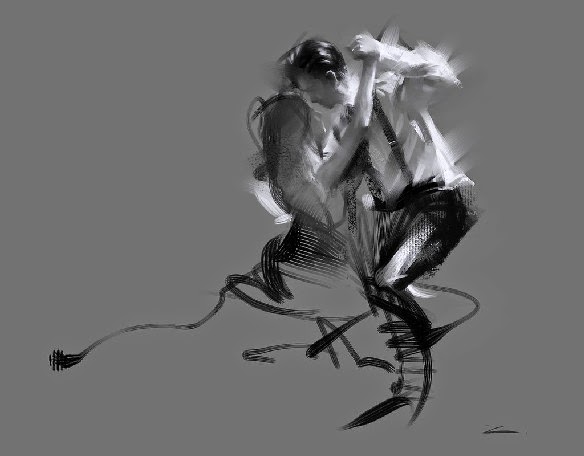Saturday, May 31, 2014
Why I keep coming back to Tango
There are no mistakes in tango. This has meaning on so many levels. The simplest is that without set figures and steps, nothing is off the table - you can
attempt anything, and hopefully you can make it beautiful (some movements make this easier than others of course).
Tango is sexy and passionate and intimate and filled with longing and strife and anger and tenderness and beauty.
It's uniquely challenging and difficult. I like difficult things, it turns out.
It demands a level of balance and awareness and body control that I didn't experience in other dances. Not that other dances lack that, I just think that it comes later in the learning sequence. With Tango it begins on day 1. I danced ballroom styles for over a year and didn't realize that I was essentially falling onto every step the whole time. Once I started tango, I figured it out in about a week, and started correcting it in the first month. And this vastly improved all my other dancing.
The music is beautiful. And various. You can dance tango to nearly anything, because it's so improvisational and flexible. You can tango to classic tangos (Bahia Blanca is a favorite of mine, along with "Por una Cabeza" (Scent of a Woman" and "True Lies"), or modern tangos ("Whatever Lola Wants", "Roxanne") or waltzes ("valz" in spanish), to pop music. I've tangoed to Adele "Make you Feel my Love", to Elvis Costello "Watching the Detectives", to Lorde "Royals" and Amy Winehouse " I'm no good" - a wonderful fit for tango.
The Gallantry and old school chivalry of dancing in general holds very much in tango, and that appeals to me as well. The man leads, and the woman follows, but the goal is to provide a pleasant and fulfilling experience for the woman. She should be intrigued, happy, and feel like she is dancing beautifully and that all are looking on her with amazement and envy.
I'm most familiar with the leader's role and responsibilities, but the woman's is no less daunting. I've tried to follow, and being on your axis and prepared to move in any direction requires an alertness and a kind of a zen mind that I found supremely challenging. Another factor (shared with other dances) is the fact that when something is led, the woman must aggressively pursue and execute the step or move. A combination of stillness and motion, of waiting peacefully, and moving confidently, and a willingness to essentially trade the lead with the man as the music inspires is required.
The man must quickly learn and dance to his partner's level of experience and vocuabulary, and his lead must be authoritative and unmistakeable while still being gentle and considerate of however long her response may take. If any signals get crossed (either through a vague lead or difficulty following), the man must seamlessly accommodate whatever has actually happened, ideally without ever letting on to his partner or observers that anything unexpected has occurred. The woman should always feel that she knows what is being asked of her, and should never feel like she performed anything less than perfectly. The man must be able and willing to give her time to dance as the music inspires her, and there will be times when she is inspired to change her pace or include embellishments or even perform something that was not explicitly led. A leader must always have a plan, but when the lady requests time or even takes the lead, he must smoothly and elegantly accommodate that. At all times the man must dance with confidence. There are no mistakes in tango, and the man must ensure that.
Subscribe to:
Posts (Atom)
